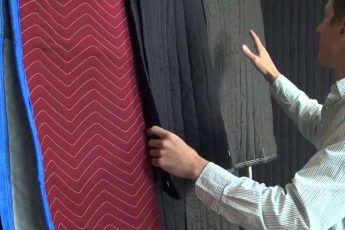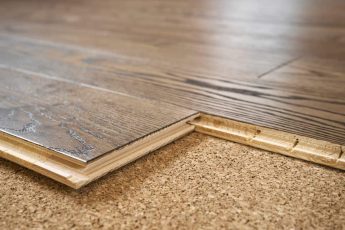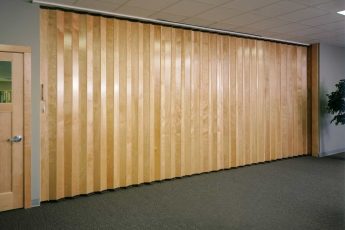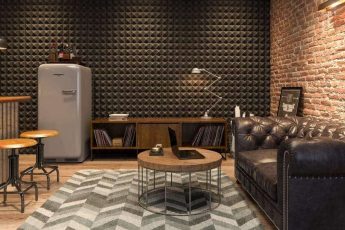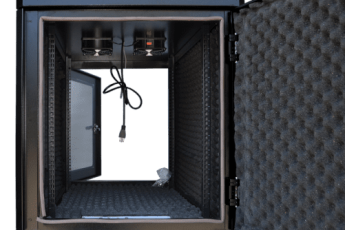Soundproofing a wall involves insulating the entire wall from sound. There are different ways to achieve this. These include Mass loaded vinyl, Fabric wrapped acoustic panels, Resilient bars, and Polyurethane foams. Each of these solutions has its pros and cons.
Mass loaded vinyl
Mass loaded vinyl can be used to soundproof a wall. It’s easy to install, but it requires two people or more. To install it, you roll a large roll of vinyl across the wall. Then, using a pen, mark where it needs to be cut.
Mass loaded vinyl is heavier than drywall and requires more rigid support. Because it is so heavy, it’s difficult to hang it straight. Therefore, mounting it on drywall is a much more convenient option. Whether you’re using mass loaded vinyl or drywall, here are some tips to follow.
Mass loaded vinyl is an effective way to soundproof a wall. It is made of vinyl with extra layers of barium sulfate or calcium carbonate. This material is durable and flexible, making it a popular choice for soundproofing. It is also water-resistant and can stick to a variety of surfaces.
Mass loaded vinyl can also be used as an interior wall covering. This material can be applied on drywall or a surface using a green glue. After the Green Glue has cured, it’s time to apply a middle layer of sound deadening material. Dynamat is a great option for the middle layer, and you can even use a neoprene mat instead.
While MLV is an excellent solution for soundproofing a wall, it is not ideal for all rooms. If you have a serious noise problem, you should consider using a foam or fiberglass panel instead. However, Mass Loaded Vinyl is cheap, effective, and easy to install.
Fabric wrapped acoustic panels
Fabric wrapped acoustic panels for walls can help to improve the sound quality in a room. They are often used in music rooms or other settings that are prone to loud noises. Unlike regular wall coverings, fabric acoustic panels don’t absorb sound, but instead trap it inside. This makes them a great choice for enhancing the sound of singers or musicians.
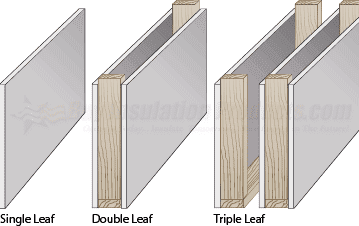
Fabric wrapped acoustic panels are available in many different fabrics and colors. You can also have custom designs made. They work to reduce noise and are also aesthetically pleasing. They can be used on interior walls or ceilings, depending on their design.
Fabric wrapped acoustic panels are an affordable way to create a quieter environment. They also envelop loud sounds, making it easier to hold conversations and listen to music. They also create a quieter learning and work environment. By creating an acoustic balance at all frequencies, these panels are an excellent option for soundproofing a wall.
Polyurethane foams
Polyurethane foams are a great option for soundproofing a wall or ceiling. There are many benefits to using this type of foam, including increased energy efficiency, improved structural support, and overall comfort. These products also have acoustic properties, which will make your office space much quieter. This material is also an excellent choice for multimedia environments.
Polyurethane foam is available in a variety of colors and is easy to apply. This type of foam is less dense than closed-cell foam and costs less per square foot. It has a high expansion rate, which is great for curbing sound as it travels through materials. Sprayed foams are especially good for soundproofing a wall, as they block the airborne noise and dampen the sound produced inside the wall. These foams also help to reduce noise generated inside the room, including flushing toilets and clanging pipes.
Soundproofing foams are also great for studios. They’re perfect for vocal booths and recording studios. These foams are also excellent for home theaters, professional movie theaters, and concert halls. They reduce echo and increase the clarity of sound.
Polyurethane foams come in two main types – open and closed cells. Closed-cell foam is more rigid, but allows air and moisture to pass through. It is best for mid and high-frequency sounds. Open-cell foams are less effective at absorbing low-frequency sounds, but still provide adequate sound absorption.
Resilient bars
Resilient bars are steel channels that decouple the wall from the main structure and reduce noise from impact and vibration. These can be used in new or refurbishment construction. They can be fitted between joists on timber frames, as well as metal studwork. They also help to soundproof a masonry wall.
Installing resilient bars is relatively simple, but you may need the help of a professional. You should measure the length of the ceiling before starting. Also, ensure that the bars are evenly spaced, leaving a 5mm gap between them. Make sure you have the correct number of bars, as this will increase the soundproofing ability of the wall. Once you have the right number of bars, you can cut them and fix them to the wall.
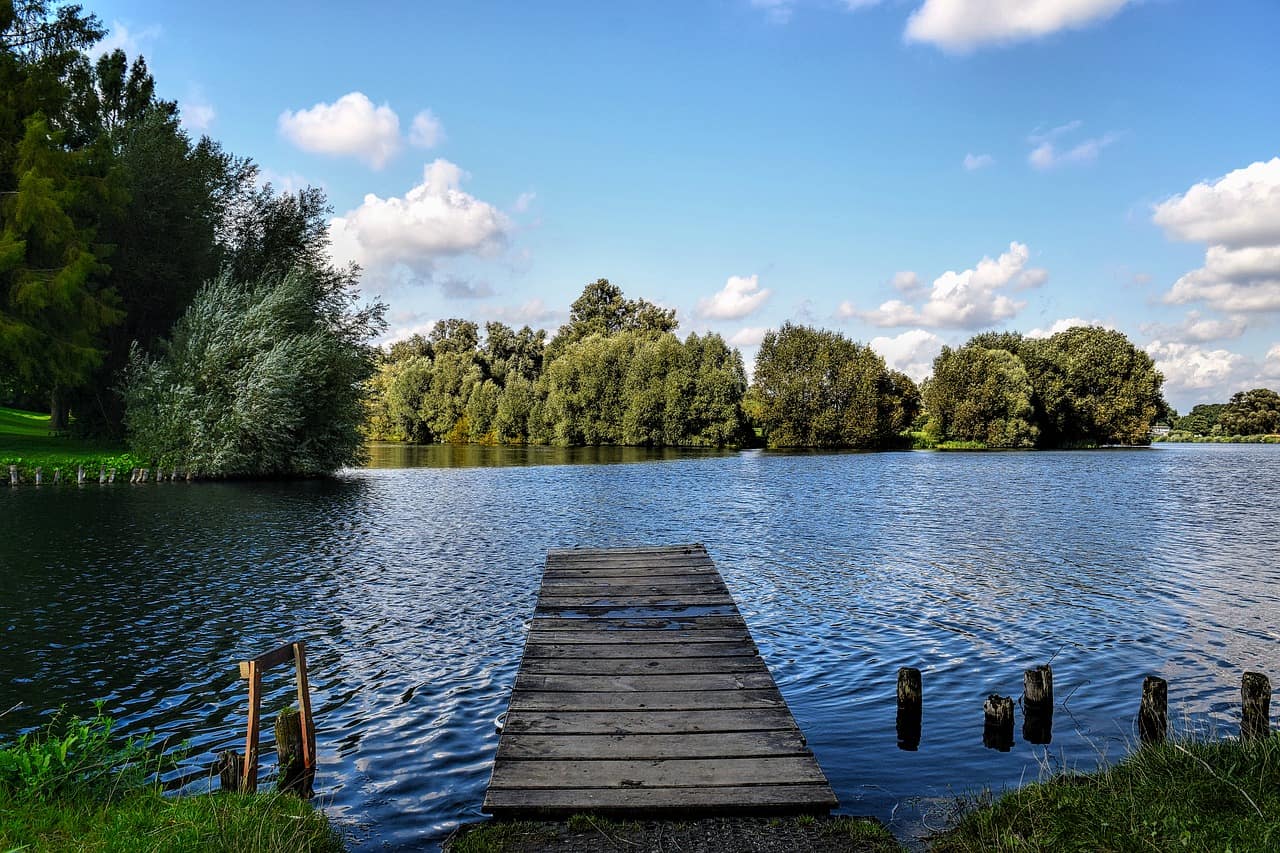
If you have a stud wall, you can install a layer of acoustic plasterboard between the resilient bars and the timber. Place the acoustic mineral wool on the first layer and adhere the second layer with a longer screw. You must also ensure that the screws you use are not in contact with timbers.
Installing Resilient Bars on stud walls will improve the soundproofing performance of the party wall and separate it from the surrounding structure. Installing the SoundBlocker Membrane between the studs will further increase the soundproofing performance of the wall.
Softer furniture
Soft furniture is one of the best ways to dampen the sound that’s bouncing off a wall. Upholstered side chairs, upholstered benches, and even floor-to-ceiling curtains help to absorb noise. Hard surfaces also absorb sound, so minimizing them can help to reduce noise levels.
Upholstered furniture dampens sound better than wood furniture. Large couches, fluffy chairs, and beds are ideal options. Cushions and rugs also absorb sound waves. Wood furniture, on the other hand, can reflect sound and cause echoes. For this reason, soft furnishings should be placed away from walls to reduce sound reverberation.
In addition to using upholstered furniture, soft throw pillows and stuffed animals can also help dampen sound. Stuffed animals made of soft, fibrous material can help absorb sound. Using pillows, cushions, and throws on sofas and chairs can help reduce noise and add style.
In addition to soft furnishings, you can also add acoustic panels to your walls. The use of soft materials like foam can help block sound. It also absorbs sound waves, which means it will reduce unwanted echoes. If you have a teenager living in your house, the use of soft furniture will help you control noise levels.
Adding more mass to the outside of a wall
Adding more mass to the outside of insulated walls is a soundproofing technique that can reduce the level of airborne noise. The mass will also help absorb vibrations, which are caused by sound waves. The drywall is a common material that provides this mass. It can be used in two layers and is relatively inexpensive.
A good soundproofing technique uses two sheets of drywall. The heavier the wall, the greater the mass. It is also recommended to use Green Glue between the layers of drywall, which will convert sound energy into heat. In addition to drywall, you should consider adding a base layer of plywood or OSB.

Soundproofing can also be accomplished by increasing the wall’s thickness. A thick wall is a dense barrier that cannot easily be vibrated by sound wave energy. This means that sound that hits it will bounce off of the wall or be absorbed by the mass, effectively blocking sound from entering or exiting the room. You can also add sheetblock to the outside of a wall. You can cover the sheetblock with drywall or even attach it to existing studs.
Adding more mass to the outside of if a wall is too thin will make it too thick, reducing its soundproofing effectiveness. However, adding more mass to the outside will also allow you to build two separate walls and leave a small air cavity between the walls. This air space is called dead air, and it acts as a void in the walls.

